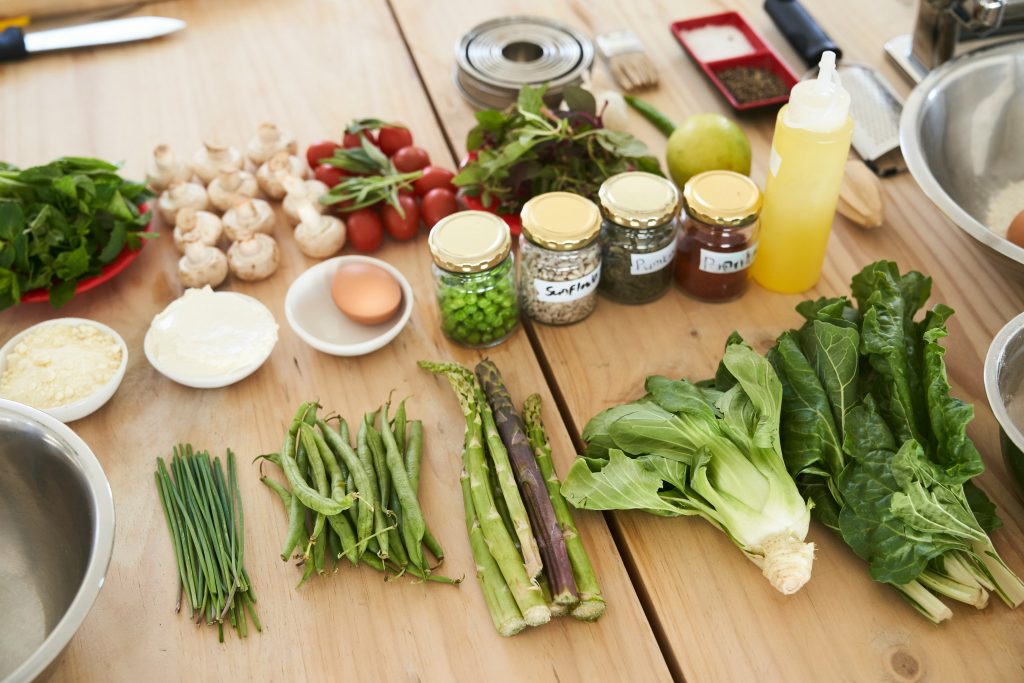Meal prepping is more than just a trend; it’s a lifestyle choice that empowers individuals to take control of their nutrition while saving time and money. As the wellness movement gains momentum, mastering the art of meal prepping stands out as an effective method for healthier eating, reduced food waste, and enhanced meal satisfaction. In this article, we’ll explore the ins and outs of meal prepping, current trends, and how to make it a seamless part of your routine. Meal prepping allows individuals to plan balanced, portion-controlled meals, making it easier to stick to dietary goals and avoid unhealthy, last-minute food choices. By dedicating a few hours each week to meal preparation, you not only streamline your daily routine but also reduce stress associated with deciding what to eat. Additionally, meal prepping supports sustainability by minimizing the need for takeout and reducing packaging waste, making it an eco-friendly choice for those looking to live more consciously.

The Rise of Meal Prepping in the Wellness Community
The global shift toward wellness has made meal prepping a hot topic. With busy schedules and an increasing awareness of healthy eating, many are turning to meal prepping as a solution. According to a study published in the American Journal of Preventive Medicine, individuals who plan their meals are more likely to make healthier food choices and maintain better overall health (1).
Moreover, mastering the art of meal prepping allows us to align our meals with our health aspirations. Whether it’s reducing sugar intake, increasing plant-based meals, or simply eating more balanced, meal prepping can be customized to fit any dietary need.
Benefits of Meal Prepping
1. Time-Saving
One of the most significant advantages of meal prepping is the time it saves during the week. Instead of cooking daily, spending a few hours on the weekend to prepare meals can streamline your weekday routine. This approach allows you to allocate your time toward activities that matter most, whether that’s exercising, spending time with family, or indulging in a hobby.
2. Cost-Effective
Meal prepping helps you save money by minimizing food waste and reducing the temptation to order takeout. When you prepare meals in bulk, you can buy ingredients in larger quantities, often at a lower cost per unit. This encourages a more intentional approach to grocery shopping, where you’re less likely to buy impulse items.
3. Healthier Choices
By planning and preparing your meals, you control the ingredients and portion sizes. This is especially beneficial for those looking to lose weight or manage specific health conditions. A study from Nutrition Journal shows that individuals who engage in meal prepping have a lower body mass index (BMI) and better dietary habits (2).
Meal Prepping Trends to Watch
1. Plant-Based Meal Prepping
The plant-based diet is more popular than ever, with many people incorporating more fruits, vegetables, grains, and legumes into their meals. Plant-based meal prepping supports health and reduces environmental impact. Consider incorporating more plant-based proteins like lentils, chickpeas, and quinoa into your meal plans.
2. Batch Cooking
Batch cooking is gaining traction as a time-efficient way to prepare multiple meals simultaneously. This method is perfect for individuals with busy schedules, allowing them to store pre-cooked meals in the fridge or freezer for quick access throughout the week.
3. Flexible Meal Kits
Flexible meal kits that allow for customization based on dietary preferences are becoming increasingly popular. Services providing portioned ingredients and recipes cater to various dietary needs, including gluten-free, vegan, and paleo. This trend supports the growing desire for personalized meal options.
Getting Started with Meal Prepping
Step 1: Plan Your Meals
Begin by selecting recipes that are easy to prepare and align with your dietary goals. Websites like Eat Well 101 and Minimalist Baker offer countless meal ideas. Choose meals that can be easily reheated and stored.
Step 2: Create a Shopping List
After deciding on your meals, create a detailed shopping list based on the ingredients needed. This ensures you purchase everything in one trip, saving time and avoiding multiple store visits.
Step 3: Cook and Portion
On your designated meal prep day, dedicate time to cooking. Prepare your meals in bulk, then portion them into containers. Use clear, stackable containers to keep your fridge organized and easily identify meals.
Step 4: Store Properly
Label your meals with the date prepared and the type of dish. Store meals in the fridge for up to four days or in the freezer for longer-term storage. Use airtight containers to maintain freshness.
Step 5: Stay Flexible
While having a meal plan is beneficial, allow for some flexibility. Life can be unpredictable, so it’s okay to swap out meals if plans change. Keep some quick options on hand for those busy nights when meal prep isn’t feasible.
Meal Prepping Tips for Success
- Start Small: If you’re new to meal prepping, begin with one or two meals per week. Gradually increase as you get comfortable.
- Incorporate Snacks: Don’t forget to prep snacks! Portion fruits, nuts, and veggies for easy grab-and-go options.
- Use Seasonal Ingredients: Shopping for seasonal produce can enhance flavors and save money.
- Stay Organized: Keep your meal prep supplies organized, and establish a dedicated prep area in your kitchen.
Conclusion
Mastering the art of meal prepping is not just about saving time; it’s about cultivating a healthier lifestyle. As the wellness trend continues to grow, integrating meal prepping into your routine can lead to better nutrition, reduced stress, and overall satisfaction with your meals. So, grab your containers and start planning—your future self will thank you!
References:
- American Journal of Preventive Medicine. Meal Planning and Health.
- Nutrition Journal. Meal Prepping and BMI.
- Harvard Health Publishing. The Benefits of Meal Prep.
- USDA. Food Waste and Meal Prep.
- Eat Well 101. Healthy Meal Prep Ideas.









